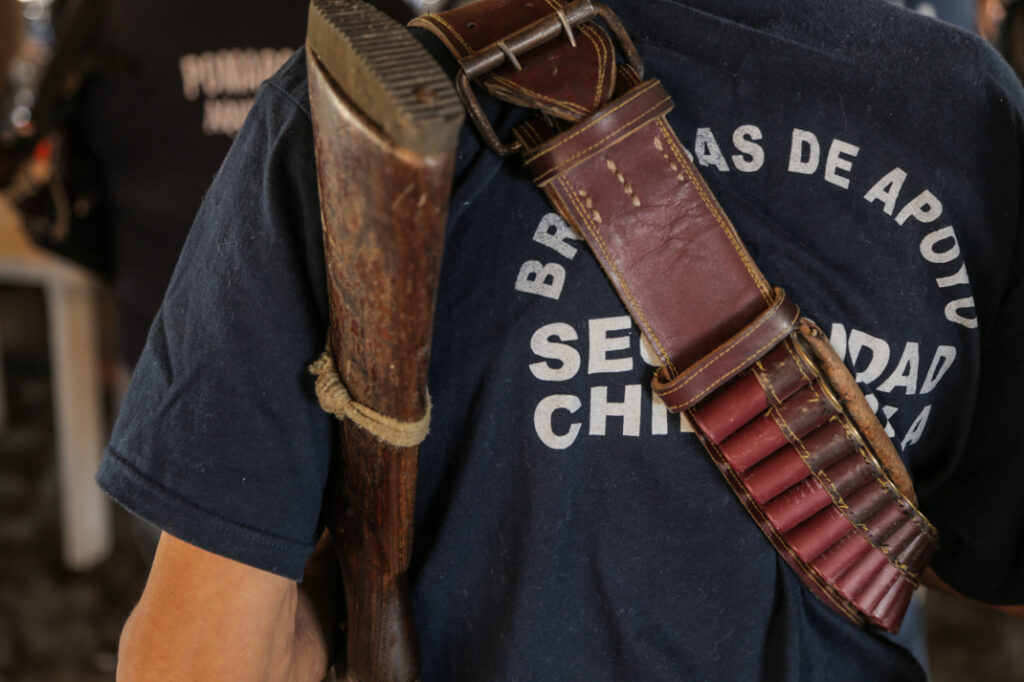
One morning when we were leaving a community, we met? I have to say it with great pleasure? to the Gavilan
It is February 2023, we are in the Sierra-Coastal region of Michoacán and our friend is one of the people who were part of the self-defense groups that burst onto the national scene, sometimes from the spotlight that spokespersons attract and sometimes on the margins. of the paths and gaps of the deep sierras. A decade has passed since this uprising.
It was one of these gaps where I met our friend in 2013: he was carrying a shotgun and almost empty holsters, an old cap, worn-out boots and a very determined look.
«I am going to look for these criminals, they do not let us live in peace, they charge us fees, they kill our people, they have us threatened. I heard that there in Tierra Caliente they are rising up to put an end to them and well, I'm going to help them from here,” Gavilán told me and signaled for me to come with him.
Knowing the Sierra Sur of Michoacán, he walked along a narrow path that went up to a rock from where he could see the immensity of the mountains. I followed him trying to keep up with his pace, although he told me not to worry, that the path was straight and that I wouldn't get lost.
When we got to this point ?which looked more like a giant finger pointing to the horizon?, Gavilán sat down, took off his holsters and told me that from this point you could see some paths where the Knights Templar ?at least some of the members of this criminal organization? they were trying to get away. «From here I am going to give you a spray of his medicine.
And we spent hours there. Many hours. Almost at sunset we went down and went to his town to eat and sleep, the next day the same thing, and like that for almost a week. The best tortillas I've ever tasted ?and the competition is tough?, lots of photos of the landscape, and lots of talks about life in this corner of the country. It was in these days that our friendship was forged, the trust that until now has made us smile every time we meet.
If we can record any positive result after 10 years of violence, uncertainty, and many troubles, it is friendship and bonds of trust with those honest people who truly stood up for a dignified life.
Not all the movement had this characteristic, although beyond proposing Manichean positions, the gray scale keeps, in addition to nuances, important seeds of resistance and rebellion that today some areas still maintain organized under a basic principle: it is the people who know how to defend the people
El Gavilán is part of these organized towns. His good aim is ?above all? in the way in which he has known how to defend his life, that of his family and that of the communities where today, after 10 years of struggle, they remain firm.
With the inseparable company and teaching of the Michoacán journalist Rodrigo Caballero and the work of the photographer Andrea Murcía, we began this cash cut that could also, in some way, be the closing of a coverage.
It has not been easy to keep track of this complex and tangled process. However, it has not been difficult to shake off the idea that our analysis will be the last word on the matter. We see, with this investigation, that we can give an account of what we have experienced as journalists and share what our role as witnesses can contribute to the critical analysis of an armed wave that shook the state and the country.
I like to think about what the stories keep, in the process of returning to them and meditating on them without so much haste.
I like to keep the friendship and the memory of people like Gavilán, or like Hilaria, Tania, Alma, Rafa, Sergio, and many others who were key to the survival of the movement, to its growth and to give, in some way, a meaning more human, an idea of restorative justice, a possibility of dialogue in the midst of so much pain and chaos.
My deepest admiration and respect for the base of a movement that walked between the ratchet of the bullets, the barricades, the workshops, the mountains and the valleys, the sea and the mountains, between a dream of peace and a dome of leopards and criminals.
Before we say goodbye, we hug Gavilán, he invites us to his town's festival, so we can meet his youngest daughter, to enjoy life between music and laughter. We say goodbye, wishing each other care and good fortune, he takes his rifle and continues on his way, just like that time in the mountains, only now his gaze has sharpened more.
You may be interested in: The extraction of life in Michoacan lands


